«In the Düdinger Moos I could almost take nicer pictures than in the Rio Negro»
For four decades, Michel Roggo has been photographing freshwater, mostly underwater, all over the world. When the corona virus stopped his international projects in 2020, he began photographing the Aare and its tributaries. The Exhibition mainly shows these new works from the canton of Bern, quite a few from the Aare landscape near Münsingen.
Michel Roggo, how did you get into underwater photography around 40 years ago?
I used to go to the water a lot when I was a little boy. At the age of 30 I started taking photographs and fly fishing at about the same time. With the latter, it is important to observe carefully. I noticed how beautiful the underwater world is. So the step to underwater photography was obvious. Soon I undertook my first trip to Alaska and there began to work photographically with salmon.
And you stuck to it: What is the special appeal of underwater photography for you?
The difficulty. I love challenges, that's my nature. Starting with an idea for a picture, finding a way to implement it. How do I bring the camera to a certain place: With a pole? Do I snorkel or dive? I'm also fascinated by this black box: We have a picture of the distant coral reef, but not of the small creek on our doorstep. When I was tied to Switzerland for a while because of the corona pandemic, I went to the Düdinger Moos to take pictures. And I was almost able to take nicer pictures there than in the Rio Negro, where I actually would have worked at the time. Anyone who saw these photos could hardly believe that they were taken in Düdingen.
So, for someone like you who has seen the waters of the world, wasn't the local underwater world unspectacular?
no way. I now enjoy traveling in Switzerland very much. The underwater scenery here is beautiful. When the light falls through the trees into the water and shines through the algae, it can be magical. I can also work more intensively here: in the summer of 2022, for example, I photographed for five weeks in virtually the same place in the Aare. That means: I go there and take photos, then I need maybe two days for the selection, correct certain things and then go back. I can't do that abroad, I'm under a lot more pressure there.
What does it take for you to be happy with a picture?
Many factors come together here. It's about composition, lighting, the balance of colors and objects. When I'm in a place in the water, I'm looking for a composition, then maybe waiting for the wind or waves to change, or for a fish to swim into it. Last summer I lay in a tributary of the Aare for three hours. I was completely absorbed in this world and at some point the fish swam around me. I want to capture that mood. At best, the viewer of the picture feels as if they are in the water in my place.
How did the pictures you are exhibiting at Photo Münsingen come about?
Partly on the shore or standing in the water, partly I dived or snorkeled. When I'm standing in the water, I hold the camera, which is attached to a pole, in the water. On a display above water, I can see what I'm photographing. I only use full-frame cameras with different resolutions. One of them takes macro shots, but with a wide-angle effect. I can get very close with this. I haven't used flash in 20 years, so I have to work with natural light. I also take pictures with low ISO values of 200 or even better 100. I use special underwater housings and adapt them so that I can control the camera remotely. I have always loved to spend a lot of time tinkering, for example to find watertight solutions. I spent about a year developing a working remote control.
Recently you've been on the road a lot for the Canton of Bern's renaturation fund. What does this assignment mean to you?
Unfortunately, we humans have destroyed many things. Overall, the state of our waters is catastrophic. In the 1980s I was able to take photos with hundreds of grayling in the Aare near Münsingen, but this time I didn't see a single one. But there are places that have been largely spared or have just been upgraded again through targeted renaturation measures. The canton can take over the prints of my pictures and exhibit them in schools, for example. I am happy if I can contribute to raising awareness with my work. The younger generations in particular should also keep hope and see that we can correct mistakes.
What are your plans for the near future?
At the moment I'm working on a system for equipping an underwater drone with a full-frame camera. Unfortunately, the image quality of the drones on the market is still not good enough. For example, I would like to be able to take pictures of the place where all the barbels from Sense, Saane and Aare come together to spend the winter. Diving is difficult there in winter, but a drone at 20 meters depth could probably produce incredible new images - and reveal another part of the black box.
Interview: Raffael von Niederhäuser
Michel Roggo at the Photo Münsingen 2023:

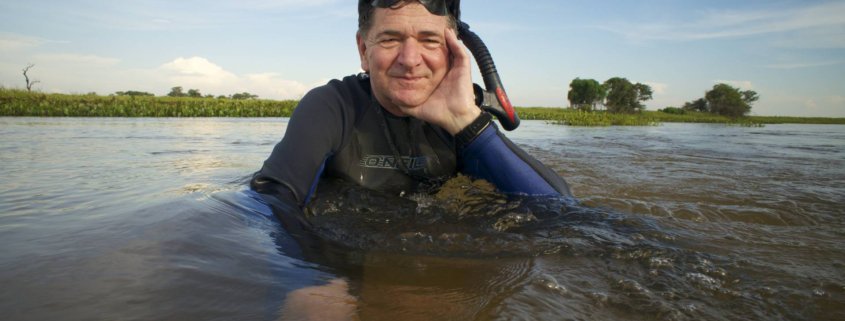
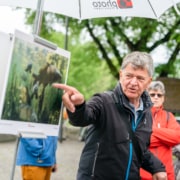
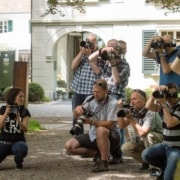
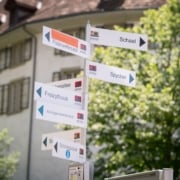

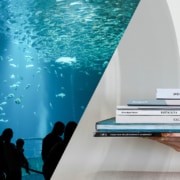
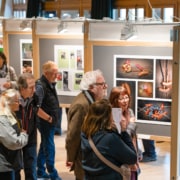


Leave a comment
Participate in the discussion?Leave us your comment!